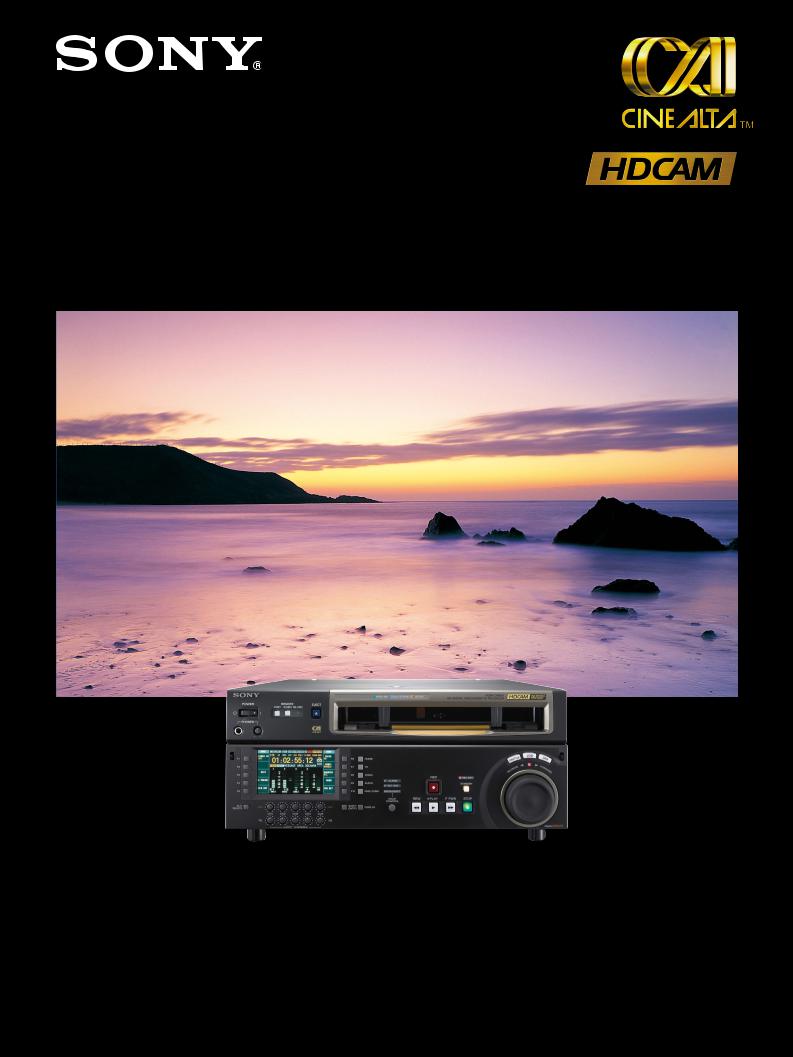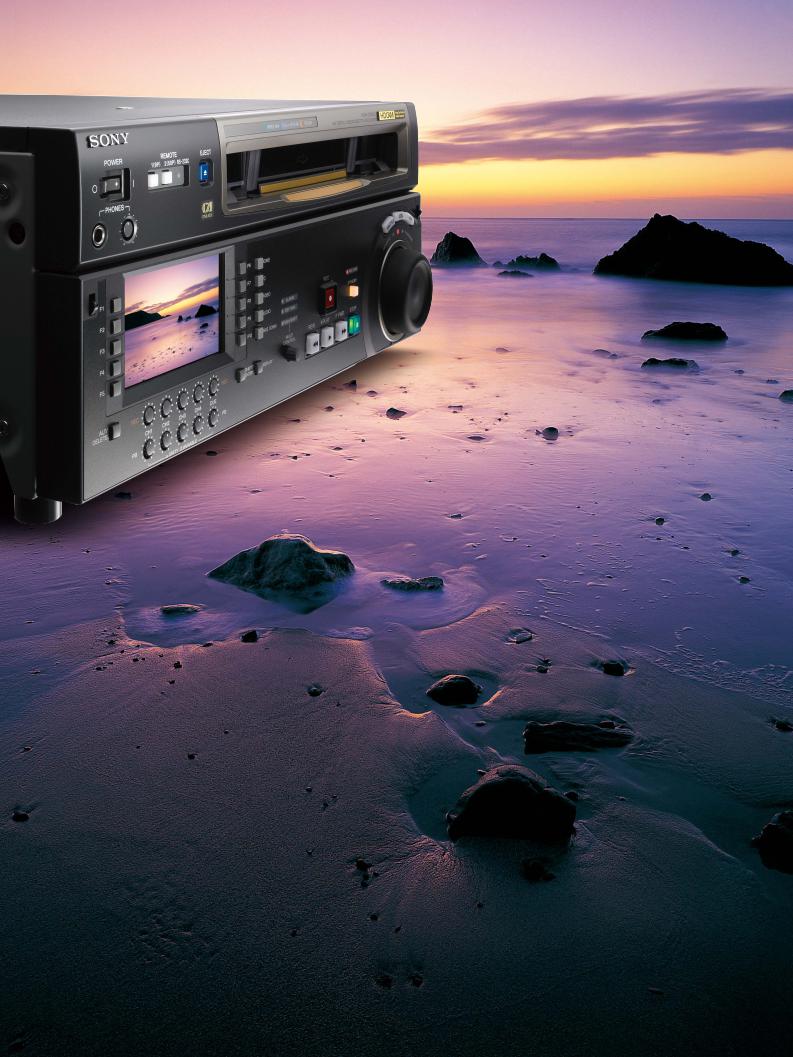Sony HDW-D1800 User Manual

TM
Sony Digital Recorder
HDW-D1800/HDW-1800

HDW-D1800/1800 HDCAM Studio Recorders – Cost-effective Solutions for an Even Broader Spectrum of HD Opportunities
Since their introduction in 1997, a huge number of Sony HDCAM™ products have been adopted worldwide in a broad range of production areas such as dramas, documentaries, commercials, news gathering, and digital cinematography.
Its stunning picture performance, comprehensive range of products, and bullet-proof reliability have made the HDCAM format the clear choice for these uses. Sony’s commitment to continuous product development has now led to the creation of more affordable HDCAM equipment in the form of the new HDW-D1800 and HDW-1800 studio recorders.
Despite their affordable prices, they provide high picture performance, multi-format recording capability including 24P, frame-accurate editing capability, and high reliability – all inherited from the well-known HDW-2000 series VTRs. The HDW-1800 model is a studio edit recorder with HDCAM recording/playback capability, while the HDW-D1800 model
also offers legacy playback of Digital Betacam™ and MPEG IMX™ format tapes with an internal up-conversion capability. Both recorders have a built-in down-converter as standard, enabling SD/HD mixed operations as well as easy integration into existing SD-based editing environments. To accommodate the requirement for emerging HD formats, two types of powerful options are available: HKDW-104 for 720P and 2-3 pull-down output capability, and HKDW-105 for i.LINK™ HDV™ 1080i input. The front panel of both recorders features a jog/shuttle dial, and also a large color LCD screen that displays both playback pictures and various information such as timecode, audio level meters, and operational menus, offering great operational efficiency.
With the new HDW-D1800 and HDW-1800 studio recorders, the solid quality of the HDCAM format can now be easily used in more HD programming opportunities than ever before.
2

Features
High-Definition Picture Quality with the HDCAM Format
The HDW-D1800 and HDW-1800 recorders adopt the proven HDCAM format to record 1920 x 1080 resolution, high-definition component digital signals. The HDCAM format uses an extremely intelligent compression scheme with a high video bit rate of 140 Mb/s (data rate on tape of 185 Mb/s.) This allows the format to provide superb picture quality onto a highly robust and cost-effective 1/2-inch tape, with a design inherited from the Betacam series.
Interlace/Progressive Switchable Recording and Playback
An important element that makes the HDW-D1800 and HDW-1800 recorders so versatile is their ability to record and play back material recorded in multiple signal formats. They support both interlace and progressive recording modes with the following selectable frame rates: 1080/59.94i, 1080/50i, 1080/29.97PsF, 1080/25PsF, 1080/24PsF, and 1080/23.98PsF.
Upand Down-conversion Capabilities with Selectable Picture Modes
The HDW-D1800 and HDW-1800 recorders can output 525/59.94i and 625/50i signals in SD-SDI or analog composite from HDCAM playback. The HDW-D1800 can also output 1080i signals in HD-SDI from SD legacy playback. These upand down-conversion capabilities provide unlimited operational flexibility. When monitoring such converted signals, the picture display mode can be selected from the following, depending on the type of application.
SQUEEZE mode |
|
|
LETTER BOX mode |
|
|
|
|
Powerful Legacy Playback Capability (HDW-D1800 only)
The HDW-D1800 recorder offers a powerful legacy playback capability for Digital Betacam and MPEG IMX format tapes. This allows flexible use of acquisition tools in the field, and easy integration into existing editing environments.
EDGE CROP mode
HD to SD, 16:9 HD picture is down-converted and output as a 4:3 SD picture.
HD to SD, 16:9 HD picture down-converted to SD and output is presented in Letter-box on a 4:3 monitor.
HD to SD, edges of a 16:9 HD picture are cropped in the down-converted 4:3 SD picture.
SD to HD, 4:3 SD picture is up-converted, then output as a 16:9 HD picture.
SD to HD, 4:3 SD picture is cropped and presented as a 16:9 picture.
SD to HD, 4:3 SD picture up-converted as a 16:9 HD picture, however the sides are cropped.
3
